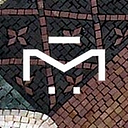Creating the perfect mosaic sky — One of the most difficult tasks in mosaic art
Every art form has its tough works that demand the utmost masterful artistry. Sometimes the most prolific artists are the ones that don’t shine in one particular “department”. Maybe your favorite ballet dancer does the most glorious en pointe, but their grand adage is not that good. Maybe your favorite local painter does wonderful aquarelles, but they are terrible with oils.
Just like everyone else, most artists have learned to keep their weaknesses under wraps, while letting their strengths take the stage. That doesn’t necessarily mean that they’ve stopped trying in a certain area. In fact, I would say that trial and error method is what makes the art world go round. So, if that nose doesn’t look quite right, draw it again, or if that video frame doesn’t fit, make another one. However, keep in mind that the world around you isn’t perfect, so your art shouldn’t be either.
One of the most difficult tasks in mosaic art is creating a realistic sky. Depicting a sky, in general, is quite difficult and it doesn’t matter if you are painting it with watercolors, oils, or acrylics, photographing it with a DSLR camera or a smartphone, or crafting it with stained glass tiles or marble mosaic tiles. In either of these cases, your sky could end up looking one-dimensional and dull.
Needless to say, creating a realistic sky out of mosaic tiles requires some enviable skill and experience. However, that doesn’t make it impossible for someone with less prowess. One simply has to pay attention to some important elements in order to build a mosaic sky worth of admiration.
The crucial element of a realistic mosaic sky is gradation. When building a sky with mosaic tiles you have to be aware that are lighter at the horizon and darker the higher your eye goes. That is why most mosaicists will use their lightest blue mosaic tiles near the imaginary horizon line and their deeper blue shades at the top of the artwork.
The next things to keep in mind are perspective and light which are quite dependent on one another. Clouds are the main element in showcasing both light and perspective. Keep in mind that clouds actually reflect light and introduce depth to the mosaic artwork. Clouds that are closer to the horizon should be smaller as they are farther away, while those that are closer to the eye of the observer should be larger.
Last, but not least, colors. Yes, you read that correctly. Colors, plural. The sky is rarely ever just blue, especially if you are depicting a sunset or an early morning. The sky can contain various kinds of reds, yellows, pinks, and purples. So, don’t be scared to use color when building a sky with mosaic tiles.
To those of you that are about to embark on an adventure of building your own mosaic sky — we hope our article helped. To those that are about to start hunting for a captivating mosaic sky to place on your living room wall — we hope our article helped you too. Don’t forget, that the sky’s the limit when it comes to mosaic art. *wink, wink.
This article was originally published on Mosaics Lab’s website.
